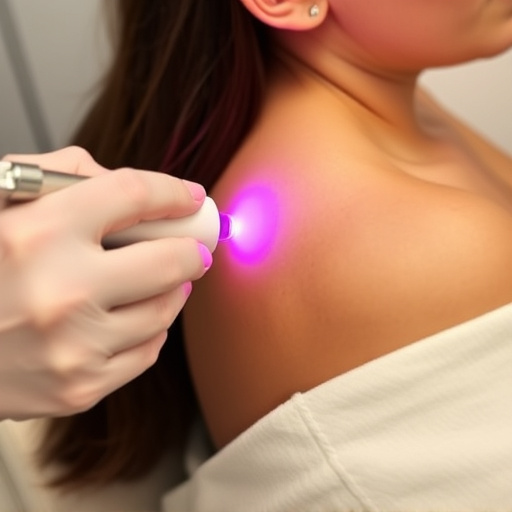Skin tags (acrochordons) are soft, benign growths that develop through friction in areas like the neck and armpits. While harmless, they can be removed for cosmetic reasons or comfort. Dermatologists offer personalized removal advice based on size, number, and skin health, with treatments ranging from cryotherapy to laser hair removal. Regular monitoring is crucial, especially for individuals with active acne or significant wrinkle reduction goals, as it allows for prompt addressing of new tags and potential underlying issues.
Skin tags, those tiny, harmless growths on your skin, are common but often prompt questions about removal. This guide delves into the frequency of considering skin tag removal treatments, offering insights for informed decisions. Understanding the growth patterns of these tags is key, as they can vary from person to person. Factors like size, location, and personal preference influence treatment needs. Learn when regular removal might be necessary and explore expert advice for a clear, confident skin journey.
- Understanding Skin Tags and Their Growth Patterns
- Factors Determining Treatment Frequency
- When to Consider Regular Skin Tag Removal
Understanding Skin Tags and Their Growth Patterns

Skin tags, medically known as acrochordons, are small, soft skin growths that typically appear in areas where skin rubs against itself. They are generally harmless but can be a source of cosmetic concern for many individuals. Understanding their growth patterns is essential when considering skin tag removal treatments.
These skin growths often develop over time, with most people noticing them as small, harmless bumps around the neck, armpits, groin, or other areas prone to friction and irritation. While they can grow at any age, they are more commonly observed in adults, especially as a result of weight gain, hormonal changes, or increased skin-to-skin contact due to personal habits or professions. Some people may also notice variations in skin tag appearance, size, and number over time, making regular monitoring important. Professional skincare specialists can offer personalized advice on when skin tag removal is necessary, considering factors like growth patterns, individual concern, and the impact on quality of life.
Factors Determining Treatment Frequency

Several factors determine how often you should consider skin tag removal treatments. One primary consideration is the number and size of skin tags you have. Smaller, less noticeable tags might require treatment less frequently—perhaps every 6 to 12 months—while larger or more abundant tags may necessitate more regular sessions, potentially every few months.
Another crucial factor is your skin’s overall health and the presence of other skin conditions like acne or wrinkles. Individuals dealing with active acne or experiencing significant wrinkle reduction through other treatments might want to space out their skin tag removal appointments. Conversely, those focused on maintaining a smooth, clear complexion may choose more frequent treatments that target both wrinkles and skin tags simultaneously, such as chemical peels.
When to Consider Regular Skin Tag Removal

Skin tags are small, soft skin growths that can appear anywhere on your body, often as a result of friction or skin rubbing against itself. While they are generally harmless and may even be considered harmless anomalies by some, there are instances where regular consideration for skin tag removal becomes necessary. This is especially true if the skin tags are causing discomfort, irritation, or self-consciousness. Additionally, certain professions that demand frequent hand movements or exposure to specific elements might require their removal to prevent further issues.
If you’re noticing an increase in the number of skin tags or they seem to be growing in size and appearance, it could be a sign that your body is going through changes, such as weight fluctuations or hormonal shifts. In such cases, consulting a dermatologist for skin tag removal treatments, including methods like cryotherapy, surgery, or even laser hair removal, can help maintain skin rejuvenation and overall well-being. Regular check-ups are beneficial to ensure any new tags are addressed promptly, especially if they have the potential to lead to more significant issues over time, such as persistent itching or even skin cancer concerns related to long-term neglect.
Skin tags are a common concern, but deciding how often to consider skin tag removal treatments depends on various factors. Understanding their growth patterns and individual characteristics is key. Regular removal may be necessary for frequent or unsightly tags, while occasional trimming suffices for others. Consulting a dermatologist can help determine the optimal treatment frequency, ensuring healthy, smooth skin without excessive procedures.














